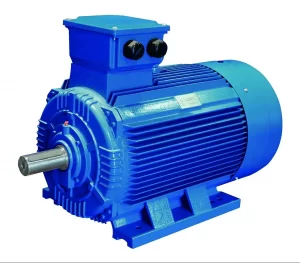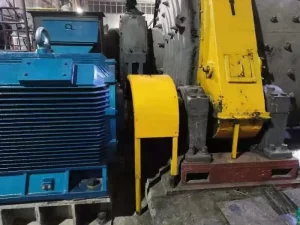High-energy permanent magnets composed of rare earth NdFeB materials are employed to excite the magnetic field in permanent magnet synchronous motors. This enables such motors to achieve substantial reductions in size and weight. The absence of a rotor winding and the compact rotor size contribute to enhanced efficiency in these motors.
PREVIEW
Construction of PMSM
A basic synchronous motor and a permanent magnet synchronous motor (PMSM) are constructed similarly, with the rotor design being the primary distinction. In contrast to a conventional rotor, a PMSM’s rotor uses permanent magnets to create field poles in place of field windings. Because of their high permeability, medium-grade iron, boron, and samarium-cobalt are frequently used to make permanent magnets.

Neodymium-boron-iron permanent magnets are the most commonly used because they are readily available and reasonably priced. This kind of magnet is fixed to the rotor, which is normally housed inside the electric motor’s stator. On the other hand, certain motor configurations include an external rotor, which leads to an inside-out design.
The rotor primarily comprises these powerful permanent magnets, which are selected for their high coercive force. On the other hand, the stator consists of an outer frame and a core housing windings. In many cases, a design incorporating two- or three-phase windings is commonly adopted for the stator.

Working Principle of PMSM
A synchronous motor works on the basis of the interaction between the constant magnetic field of the rotor and the spinning magnetic field of the stator. A revolving magnetic field is produced by a synchronous motor’s stator, just like in a three-phase induction motor. Ampere’s Law states that torque is produced by the synchronous alternating current from the stator windings and the rotor’s magnetic field. This torque allows the rotor to rotate more easily.
A constant magnetic field is produced by permanent magnets on the rotor of permanent magnet synchronous motors (PMSM). The rotor’s poles line up with the stator’s revolving magnetic field when it rotates at the synchronous speed. As a result, when directly linked to a network of three-phase current, PMSMs are unable to self-start.